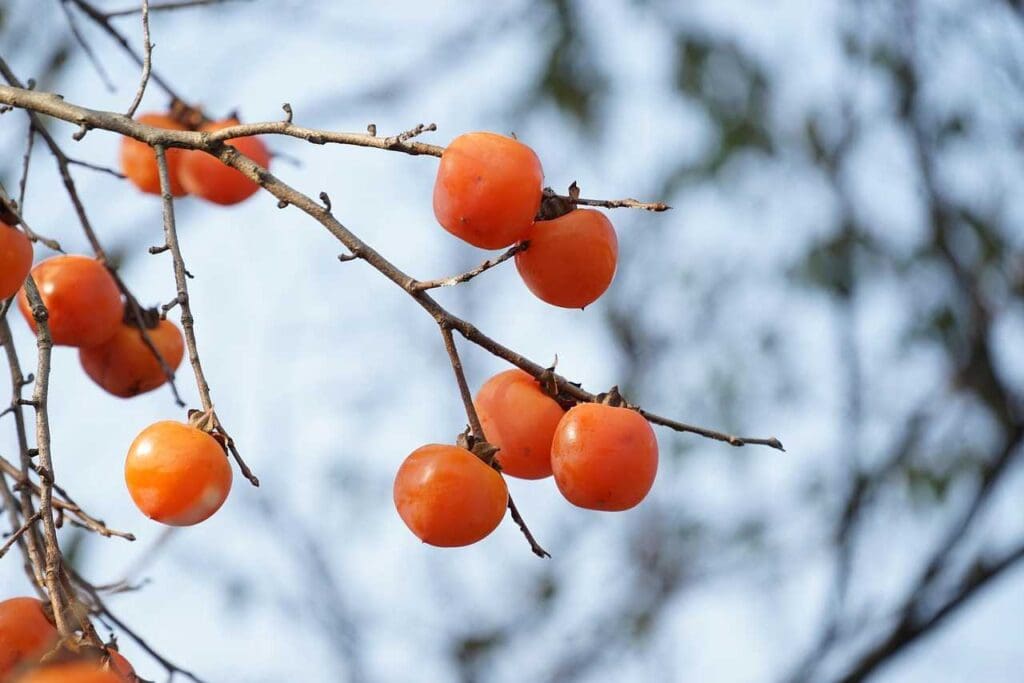
The days are getting cooler and darker. The time changes on Sunday, November 2, 2025. Several states have tried to make daylight savings time permanent, but they can not pass that law in their state without the Federal Government passing a law to enact it throughout the country. So—we accept the time change, because really—what can we do about it?
The older generations in our country look at changes in nature that signify what may happen next. My 91-year-old Dad opens persimmon seeds each year to see what kind of winter we might have. If you’ve never heard of that, here is what image (shape) you look for in the middle of the seed:
- Spoon – A snowy winter with heavy snowfall.
- Knife – A cold, icy winter with cutting winds.
- Fork – A mild winter.
My dad saved seven seeds, dried them out, and used pliers to open them. He found a spoon, or as he said, “a shovel”, this year. I can’t recall him ever finding a “shovel”. In the past it has been a fork or Knife.
AI says we should see a, “potentially harsh season with heavy precipitation, including snow and ice, especially for the Eastern U.S.” — based on this year’s persimmon seed. The Farmer’s Almanac backs up a potential for “widespread wintery weather.”
Others, check out the woolly worm for folklore prediction of the upcoming winter. If the black bands are wider than the rust colored band, it will be a harsh winter. So far the “woolly worm” prediction for 2024-2025 is leaning toward a harsh winter coming.
In Laura Ingalls Wilder’s book, The Long Winter, Pa and Laura examine a muskrat house near Pa’s fields. Pa noted the walls were thicker than normal.
He said, “We’re going to have a hard winter…”.
“Why, how do you know?” Laura asked in surprise.
“The colder the winter will be, the thicker the muskrats build the walls of their houses,” Pa told her. “I never saw a heavier-built muskrats’ house than that one.”…
“Pa, how can the muskrats know?” she asked.
“I don’t know how they know,” Pa said. “But they do. God tells them, somehow, I suppose.”
“Then why doesn’t God tell us?” Laura wanted to know.
“Because,” said Pa, “we’re not animals. We’re humans, and, like it says in the Declaration of Independence, God created us free. That means we got to take care of ourselves.” (From The Long Winter, pp. 12-13)
Later in the book, Pa is hanging out with a group of men at a store in town when a very old, wise Indian comes in and gives them a warning. Pa has to explain to Almanzo what the Indian was trying to tell them—
“Pa told him. The Indian meant that every seventh winter was a hard winter and that at the end of three times seven years came the hardest winter of all. He had come to tell the white men that this coming winter was a twenty-first winter, that there would be seven months of blizzards.” (p. 62)
The Indian’s predictions came true. If many of those families had not moved to town, they would have died alone on the prairie because of that dreadfully cold, blizzard filled winter, that did actually last for seven months.
Jesus even talked about signs of weather changes:
“The Pharisees and Sadducees came to Jesus and tested Him by asking Him to show them a sign from heaven. He replied, ‘When evening comes, you say, ‘It will be fair weather, for the sky is red, ‘ and in the morning, ‘Today it will be stormy, for the sky is red and overcast.’ You know how to interpret the appearance of the sky, but you cannot interpret the signs of the times. A wicked and adulterous generation looks for a sign, but none will be given it except the sign of Jonah.’ Jesus then left them and went away.” Matthew 16:1-4 (NIV)
The Lord has given us certain signs that let us know changes are coming. We have to be wise and ask for discernment (See James 1:5-8) as to which ones are telling us something we need to know and act on. And we need to have discernment to be able to prepare for changes — especially— when it comes to understanding “the signs of the times”.
What changes do you see coming, and how are you preparing for them?

Very interesting. Thank you, Jane.
Thanks, Tim!
Thanks for sharing these stories and information, Jane. 🙂 Like Tim, I found it interesting.
Thanks, Joni!